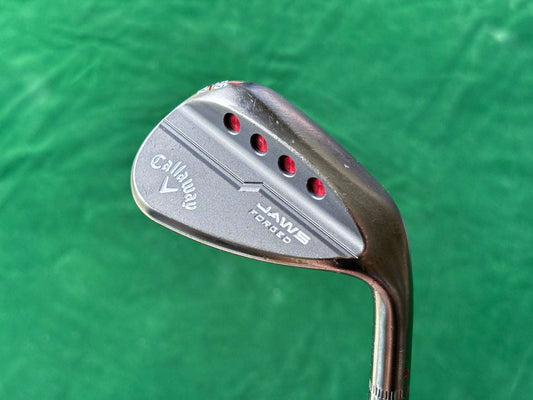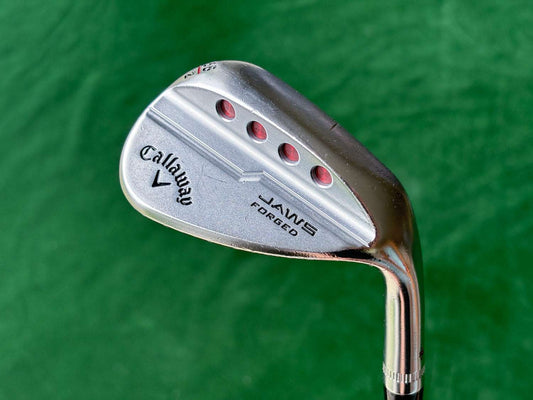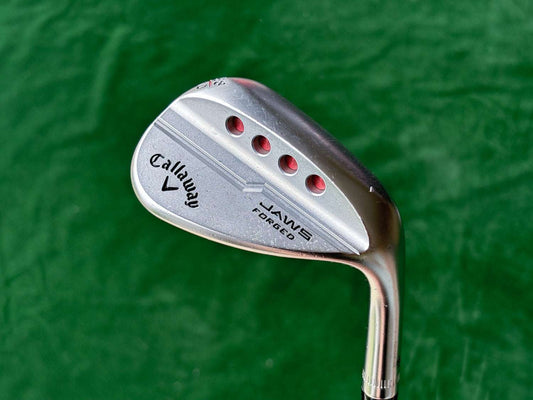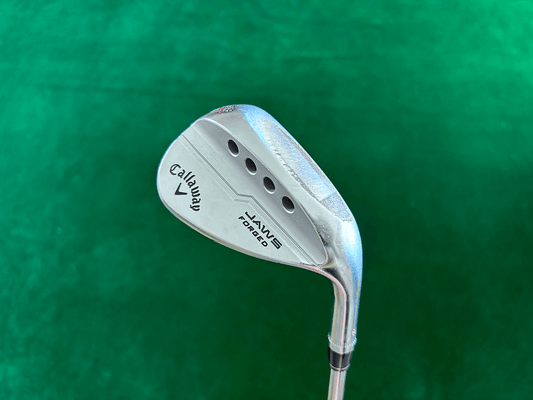The Complete Guide to Buying Golf Wedges
Wedges are among the most crucial clubs in your bag — and often the real difference between a great round and a frustrating one. From delicate chips around the green to full approach shots from 100 metres out, wedges can transform how you score and recover on the course.
For everyday golfers, the right wedges simplify those tricky short shots, improve consistency, and give you more confidence when it matters most. Yet many players still wonder:
How do I know which wedges to choose?
How many should I carry?
And what makes one wedge different from another?
If you’ve ever asked these questions, this guide from ARC Golf will walk you through everything you need to know — from loft and bounce to grind and gapping — so you can choose the perfect wedges to suit your swing and sharpen your short game.
What Is a Wedge?
Before diving into the finer details, it’s worth understanding what a wedge actually is and how it fits within your full set of clubs.
Golf clubs fall into a few main categories: drivers, fairway woods, hybrids, irons, wedges, and putters. Drivers and woods are built for distance with lower lofts, while irons offer more control but less loft. Wedges, on the other hand, are specialised scoring clubs designed for accuracy, spin, and trajectory control — particularly for shots inside 120 metres.
Wedges feature:
• Shorter shafts for enhanced control
• Higher lofts for a higher, softer ball flight
• Specialised soles and bounce angles for better turf interaction
Most standard iron sets include a pitching wedge and sometimes a gap (or approach) wedge. Beyond that, golfers can add specialty wedges like a sand wedge or lob wedge to round out their bag.
Unlike standard irons, wedges vary by a range of subtle yet important features — loft, bounce, sole design, grind, groove pattern, and finish all of which can significantly affect performance. Understanding how each works will help you make informed decisions and tailor your setup to your playing style.
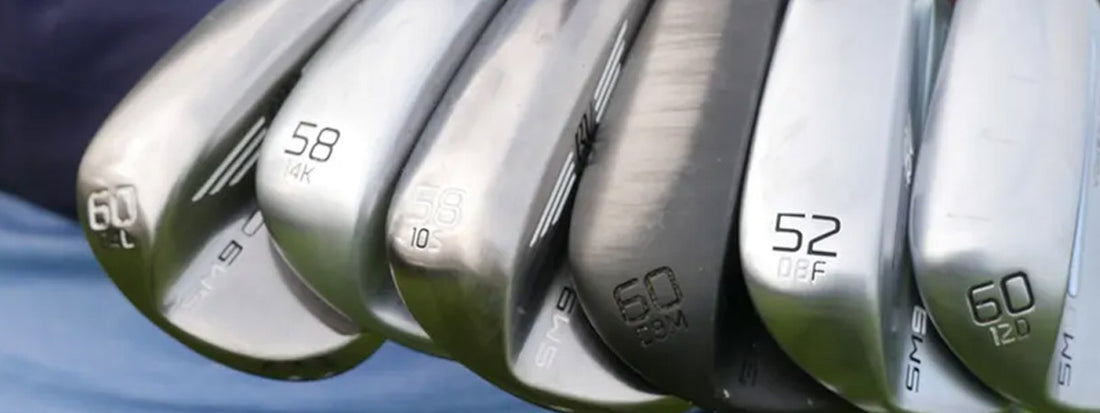
The Four Main Types of Golf Wedges
Wedges are essential for mastering the short game, and they typically come in four main types. Each serves a specific purpose depending on the distance, lie, and type of shot required.
Pitching Wedge (PW)
Loft: 44°–48°
The pitching wedge is the transition between your irons and specialty wedges. It’s designed for full swings from roughly 100–120 metres out, producing a lower trajectory with more roll-out on landing. It’s also useful for longer chip shots around the green.
Gap Wedge (GW)
Loft: 50°–54°
Also known as an approach wedge (AW), this club “bridges the gap” between the pitching and sand wedge. It covers those in-between yardages — typically around 90–100 metres — where a pitching wedge feels too much and a sand wedge not enough.
It’s a favourite for controlled approach shots and medium-length chips.
Sand Wedge (SW)
Loft: 54°–58°
The sand wedge is a versatile workhorse. Originally designed for bunker shots, its wider sole and higher bounce make it excellent for escaping soft lies, thick rough, or fluffy sand. Around the greens, it provides a high, soft flight with spin that helps the ball stop quickly.
Lob Wedge (LW)
Loft: 58°–64°
The lob wedge is the ultimate precision tool. With the highest loft of any club, it produces high, soft-landing shots that stop quickly — perfect for tight pin positions, flop shots, and tricky lies around the green.
Because it demands precision, the lob wedge is often preferred by confident short-game players who enjoy shaping shots.
How Many Wedges Should You Carry?
There’s no single right answer — the ideal number depends on your playing style and skill level.
Most golfers carry three or four wedges. Here’s how to decide:
• Four wedges (PW, GW, SW, LW):
Favoured by lower handicappers or players who prioritise versatility. Carrying four wedges allows for precise distance control and shot variety from every lie.
• Three wedges (PW, SW, LW):
A practical option for mid-to-high handicappers who might prefer an additional fairway wood or hybrid instead of a fourth wedge.
The key is to ensure consistent loft gapping between clubs. Too large a gap can leave you in awkward distances that are hard to manage.
For example, if your pitching wedge is 46° and your sand wedge is 56°, that 10° difference could equal a 25–30 metre distance gap which is not ideal. Instead, aim for 4–6 degrees between wedges, translating to a comfortable 10–15 metre spacing.
This ensures smoother transitions across your short game and better scoring potential.
Loft vs. Type
While many golfers refer to their wedges by type (PW, GW, SW, LW), most experienced players and manufacturers focus on loft numbers. Brands like Titleist, Cleveland, and Callaway label their wedges by specific degrees (e.g. 46°, 52°, 60°), allowing for more precise gapping.
As a rule of thumb, higher loft equals higher flight and more spin, while lower loft produces more distance with a flatter trajectory.
Understanding Wedge Bounce
Bounce is one of the most important — and most misunderstood — wedge features. It refers to the angle between the leading edge and the trailing edge of the sole.
Bounce determines how much the club “skids” or “digs” into the turf. A well-matched bounce helps your wedge glide through sand or grass without digging too deep or bouncing off the surface.
Choosing the Right Bounce
• High Bounce (10°–14°):
Best for soft turf, fluffy bunkers, and steep swings that take deep divots. Helps prevent the leading edge from digging too much.
• Mid Bounce (7°–10°):
The most versatile option, suited to a wide range of players and course conditions.
• Low Bounce (4°–6°):
Ideal for firm turf, tight lies, or players with a shallow angle of attack.
Matching wedge bounce to your swing and local course conditions can dramatically improve consistency and confidence — especially on delicate shots.
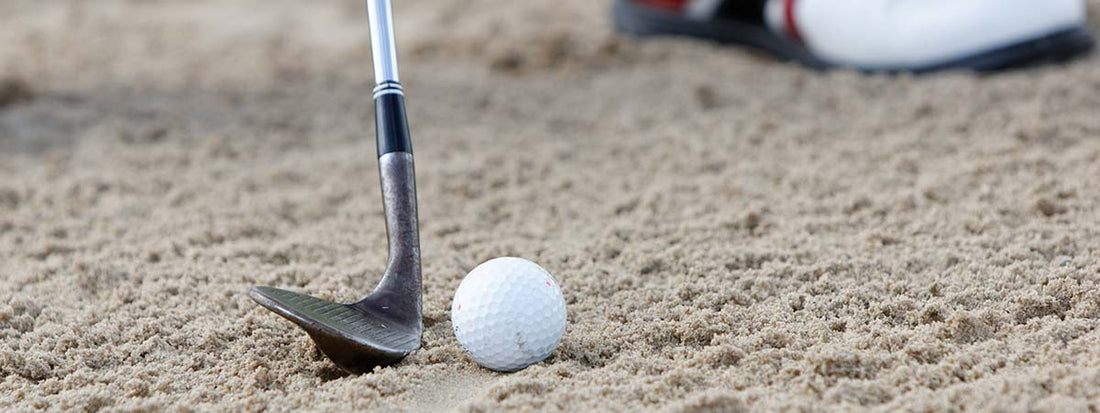
Wedge Grinds Explained
Beyond loft and bounce, grind is another key factor to understand. Grind refers to how the sole of the wedge is shaped or contoured, influencing how it interacts with the turf and how easily you can open or close the clubface.
Different grinds are tailored to different swing styles, lies, and playing conditions.
Here’s a breakdown of some common grinds used by leading brands like Titleist Vokey, Cleveland RTX, and Callaway JAWS:
F Grind: A traditional full-sole design with mid-to-high bounce (46°–56°). Excellent for full swings and square-faced bunker shots.
S Grind: A slightly narrower sole with trailing edge relief. Great for players who keep the face square and play on firmer turf.
M Grind: Offers relief on the heel, toe, and trailing edge — ideal for players who like to manipulate the clubface to hit different shots.
D Grind: Combines high bounce with versatility. Suitable for softer turf and players with a steep attack angle.
K Grind: The most forgiving option, featuring the widest sole and highest bounce. Perfect for soft conditions and bunker play.
L Grind: The lowest bounce option, offering maximum shot versatility but requiring precise technique. Favoured by skilled players who thrive on tight lies.
Understanding grind options helps you match your wedge setup to both your technique and your course — leading to cleaner strikes and better results around the green.
What Brand Should You Choose?
With so many top golf brands offering wedges that perform exceptionally well, your choice often comes down to personal preference, feel, and budget.
At ARC Golf, we stock a wide selection of used and new wedges from trusted manufacturers all carefully inspected to ensure quality and playability.
Some of the most popular options among New Zealand golfers include:
• Titleist Vokey Wedges – renowned for their precision spin, feel, and grind variety.
• Cleveland RTX and CBX Wedges – designed for forgiveness and control, perfect for golfers of all levels.
• Callaway Mack Daddy and JAWS Wedges – exceptional spin performance and premium craftsmanship.
• TaylorMade Milled Grind Wedges – known for consistency, precision-milled soles, and clean aesthetics.
If there’s a specific brand or model you’re searching for, even if it’s not currently listed online, ARC Golf can often source it for you. Just reach out to our team and we’ll do our best to track it down.
Browse Our Range of Wedges
-
Callaway JAWS FORGED 56°/12° - Sand Wedge (Stiff)
Regular price $219.00 NZDRegular priceUnit price / per$0.00 NZDSale price $219.00 NZD -
Callaway JAWS FORGED Chrome 56°/12° - Sand Wedge (Stiff)
Regular price $219.00 NZDRegular priceUnit price / per$0.00 NZDSale price $219.00 NZD -
Callaway JAWS FORGED Chrome 58°/10° - Lob Wedge (Stiff)
Regular price $219.00 NZDRegular priceUnit price / per$0.00 NZDSale price $219.00 NZD -
Callaway JAWS FORGED Chrome 58°/10° - Wedge (Stiff)
Regular price $215.00 NZDRegular priceUnit price / per$0.00 NZDSale price $215.00 NZD
Elevate Your Short Game with ARC Golf
A strong short game can transform your entire round — and it all starts with the right wedges. By understanding how loft, bounce, and grind affect performance, you can build a wedge setup that perfectly complements your swing and the courses you play.
At ARC Golf, we make it easy for golfers across New Zealand to find high-quality used golf wedges at fair prices. Every club in our range is hand-inspected for condition, grooves, and loft accuracy, ensuring you get performance you can trust.
Explore our full collection of golf wedges online at ARC Golf, including top models from Titleist, Cleveland, Callaway, and TaylorMade — and take your short game to the next level.
Shop Golf Wedges at ARC Golf
